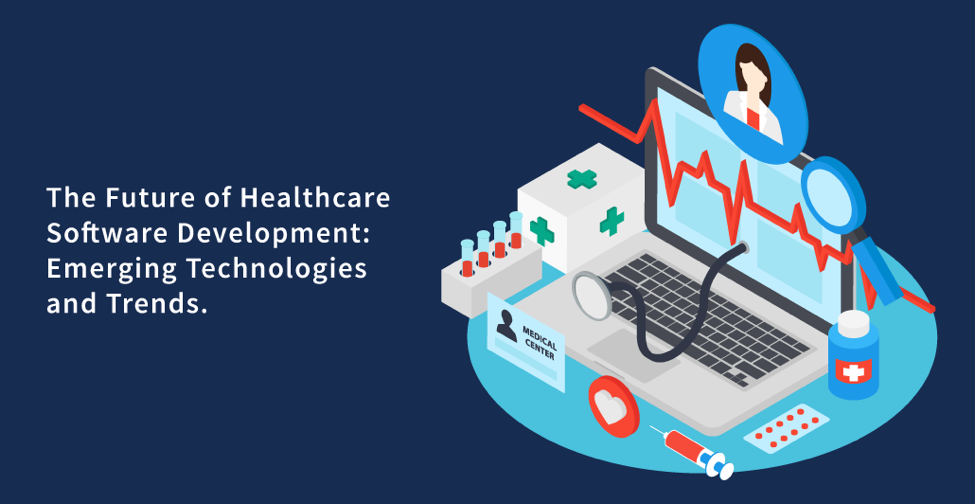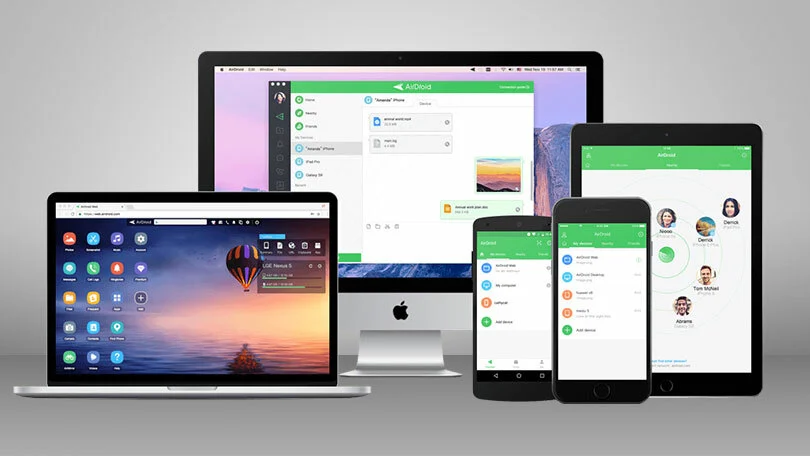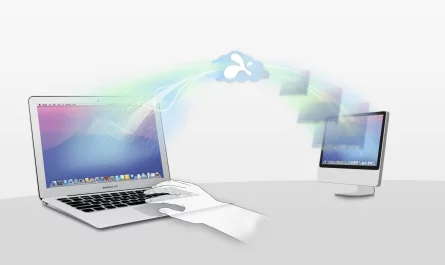The healthcare sector is innovating with advanced technology, with each passing day. The pandemic time, have made us understand the true meaning of chronic disease and how to cure it with going time. The delivery of medicines and moving care delivery models that are much in demand. However, the healthcare sector is constantly increasing with the help of Healthcare software development companies by making appointments, diagnoses, and medicine delivery online.
On another side, it is continuously looking ahead to enhance treatments, and medicines and improve healthcare quality. It is very important to remain updated with the trends that are innovating healthcare technology in 2023. Although, for the success of modern hospitals and care centers, legacy infrastructure is critical. It is necessary to consider how new systems can be integrated with existing technology and replaced with more reliable ones.
If you are interested in knowing tech innovations that will drive the healthcare industry in 2023, this article is surely for you. We have covered the most important technologies that have the potential to take your healthcare organization into digital transformation.
Contents
Artificial Intelligence
AI can be the future of healthcare software development, as many companies are investing in AI to give human-like solutions and healthcare tools to the general public. We have discussed crucial areas where the inclusion of AI in healthcare could have a significant influence.
Drug development and diagnosis
There are many applications that are treated outside of responding areas due to the pandemic. AI is helping in providing information and decision-making process. While Machine Learning is helping the development of new pharmaceuticals and increasing the efficiency of the diagnosis process.
Assume that during a pandemic, the role of a CT scan was critical in determining the accuracy of the virus’s impact on the person. A project Innereye was developed by Microsoft which is an AI-based radiotherapy tool. Its purpose is to speed up the process of 3D contouring of patients and the completion time is within minutes instead of hours.
Mental Health
Artificial intelligence is being used to detect symptoms of disorders caused by chemical changes in our brains, which have resulted in a wide range of mental health problems. Dementia is a widespread mental health issue marked by communication, cognitive, and memory problems. It is similar to Alzheimer’s disease. Deep learning AI audio processing can be used to analyze human speech and detect early signs of dementia.
An AI model can be trained and speeches can be verified to acknowledge if the person is healthy or suffering from dementia. Such models can also be used to screen for and diagnose Alzheimer’s disease early on before significant symptoms appear.
Cancer Diagnosis
Biopsy was the only option for cancer diagnosis for many years to detect cancer by means of tissue extraction for analysis. Unfortunately, this method does not provide a complete image of organ tissue, whereas histopathological procedures, such as digital scans, are used to target specific areas affected by cell mutation. By using whole slide images or WSI, pathologists can examine larger areas for human organisms.
VIR
To improve the efficiency of telemedicine, chatbot technology, and AI systems have produced a Virtual Interventional Radiologist (VIR). The patient can do self-diagnosis or doctors are even assisting such patients. They cannot obtain a primary diagnosis but are utilized to aid in surgery. It helps in providing proper information to patients before beginning proper treatment.
Remote care or telemedicine
The intervention of telemedicine surged mainly after the pandemic that affected in 2020. The only way and or we can say the safest way to treat patients was by conducting regular video conference meetings. By 2026, telehealth is about to increase by $185.6. below are some sections that are a must to be discussed for telehealth.
Compliance with regulations
The major issue going with telehealth is HIPAA compliance. Several restrictions have been removed by the 2020 pandemic, but care providers must still examine the application to ensure that it is secure and certified to handle patients’ healthcare information.
WEBRTC
WEBRTC, an open-source API-based system for connecting web browsers and mobile applications to allow audio, video, and data transmission, is the most crucial technology for telemedicine apps. This feature is mostly utilized for teleconferencing.
Cloud Hosting
HIPAA-compliant cloud hosting solutions are necessary to maintain the performance and efficiency of healthcare operations required for electronic health records (EVR). Aside from data storing and teleconferencing, essential features include integrated security, location service, appointment management, secure messaging, carer review, visit history, and wearables.
Extended Reality
The combination of three prospective technologies, augmented reality, virtual reality, and mixed reality, has enormous potential in the healthcare sector. It can improve the healthcare industry ranging from surgery assistance to telehealth applications. More features are included below.
Augmented Reality and Mixed Reality
Augmented and mixed reality are employed in a variety of medical applications, including headgear. They help in assisting surgeons while operating or help nurses to detect veins to draw blood. AR development mainly focuses on AI specialized sensors to function. It mainly depends on enhancing AI with software frameworks that target hardware to make products successful.
IoT
With the increasing popularity of wearables and IoT technologies, their significance in the healthcare industry has leveled up. Due to its applications in telehealth and telemedicine, this trend is now referred to as the Internet of Medical Things (IoMT). Additional IoT-enabled devices are listed below.
Wearables
The most innovation that took place in the healthcare industry is in wearable technology. The patient can monitor their status remotely and know their health condition is a valuable feature of the wearable. They can help measure a person’s heart rate, blood oxygen saturation, etc, steps walked per day, etc.
Apart from smartwatches, wearable devices like smart hearing aids have similar levels of impact.
Artificial intelligence is being utilized to improve hearing aid isolation, while bio-patches are being used to understand a person’s vitals without the use of a smartwatch.
Smart pills
In healthcare, the Internet of Things is giving way to the Internet of Bodies.
Smart pills are edible electronics that don’t only serve as pharmaceuticals but give valuable information about patients. In 2017, the first FDA-approved smart pill was released.
Privacy and Security
It is critical to verify that your firm is HIPAA compliant in order to avoid costly data breaches. If you are deciding whether or not to use an application on a global scale, the General Data Protection Regulation (GDPR) in the European Union must be taken into account. Many healthcare providers use software like Facetime and Skype that are not truly reliable and compliant with government adherence.
However, there is software that is compliant with video conferencing but a more customized solution is most needed.
Organ Care and Bioprinting
Organ care technology is taking place by caring for organs that are outside the body. By providing enough care, heat, and nourishment, organ care systems are designed to keep the heart, lungs, or liver outside the body for several hours. The future for organ care can be more reliant on AI, which would automatically take actions without doctors’ involvement for preserving organs for a longer time.
Other than organ care, keeping them alive outside the body is an option that should be explored.
3D bioprinting is the process of combining bio inks with living cells and printing them in 3D to create a three-dimensional structure that resembles genuine tissue.
By using cells from transplant recipients, organ rejection can be avoided. For printing purposes, these cells are cultivated and fostered in bioink. AI infusion can improve bioprinting by analyzing organs and matching them to the features of the recipient patient, making it more compatible with new hosts.
Conclusions – The Future of Healthcare Technologies
Every aspect of healthcare will continue to improve. Although, there might be threats that will be evolving and should be dealt with thorough solutions, quality, and efficiency will improve the technologies with the help of artificial intelligence, machine learning, and extended reality.
However, healthcare businesses should also understand the difficulty and issues that occur while implementing these technologies that include regulatory compliance, data privacy, security, and lack of interoperability.
If you are deciding to upgrade your healthcare organization by making time and funding both online, it’s important to team up with a Healthcare software development that understands your needs and objectives. They ensure a positive impact and bring digital transformation to healthcare organizations.




